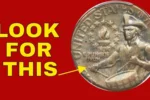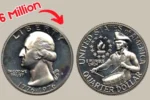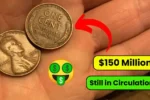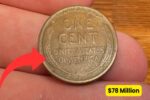Rare Coin Worth $4569 Million? Check Your Pocket for Hidden Treasure
Ever dumped your change at the end of the day without a second thought? You might be overlooking a coin worth far more than its face value. The world of coin collecting is full of real stories where everyday people discover priceless treasures in the most ordinary places.
What sounds like a collector’s daydream has become reality for more than a few lucky individuals. Over the years, pocket change has transformed into six- and seven-figure fortunes, turning unsuspecting folks into overnight millionaires.
When Pocket Change Becomes a Jackpot
Once in a while, the coin collecting world sees value spikes that defy all logic. While headlines about coins fetching millions sound sensational, the truth behind these sales can be even more astonishing.
Coin collecting is one of humanity’s longest-standing hobbies. Ancient civilizations preserved coins not just for spending but for their beauty, symbolism, and historic worth.
So, what gives a coin such high value? It’s a rare mix of factors—scarcity, pristine condition, historical relevance, and demand—that together elevate simple metal into a sought-after collectible worth serious cash.
Many of today’s most expensive coins started as everyday currency—used for groceries or rent—before someone realized their extraordinary importance.
A $20 Coin That Made History: The 1933 Double Eagle
Among the most legendary coins ever minted is the 1933 Double Eagle. Intended to be just another $20 gold piece, it became a one-in-a-million relic.
Following President Roosevelt’s order to pull gold from circulation, nearly all 1933 Double Eagles were melted down—except for a select few that mysteriously escaped.
In 2002, one sold for $7.59 million. Then, in 2021, it smashed records by selling again for an eye-popping $18.9 million—making it the most expensive coin ever sold.
What’s fascinating isn’t just the value, but how close this piece of history came to being lost forever—saved by a rare twist of fate.
The 1943 Copper Penny: A War-Era Mistake Worth Millions
During WWII, copper was too valuable to be used in coins, so the Mint switched to steel for 1943 pennies. But a few copper blanks were mistakenly used—and those accidental coins are now priceless.
Fewer than 20 genuine 1943 copper pennies are known. One was found by a teenager in his change back in 1947. That coin eventually sold for more than $200,000. Another turned up in the ’50s and later fetched $1.7 million at auction.
Even now, collectors believe more of these elusive coins may still be hiding in jars or spare change across the country.
Modern-Day Finds: Errors and Oddities From Recent Years
Contrary to popular belief, valuable coins aren’t always old. Some of the most desirable collectibles are modern minting errors or limited-issue releases.
Even with today’s advanced technology, mistakes slip through—and when they do, collectors take notice.
1995 Double-Die Lincoln Cent
A misaligned die produced thousands of 1995 pennies with noticeable doubling on the front. Once overlooked as regular cents, these errors now sell for anywhere from $50 to several thousand dollars.
The doubling is especially clear on the word “LIBERTY” and the date. Since many entered circulation unnoticed, they’re still turning up in spare change.
2004-D Wisconsin Quarter with an Extra Leaf
Part of the 50 State Quarters series, the Wisconsin coin famously featured a cow, cheese wheel, and corn stalk. But some had an odd extra “leaf” on the corn.
Whether it was an error or intentional remains debated, but collectors didn’t care—these quarters can now sell for hundreds or even thousands if in great condition.
Why We Value Coins So Highly
What makes us place such huge worth on these tiny pieces of metal? It’s not just rarity—it’s emotion, history, and human connection.
Rare coins feel like time travelers—survivors of wars, economies, and eras long past. They’re not just investments, but artifacts with stories to tell.
And the thrill of finding one? It’s addictive. Knowing that some treasures may still be out there makes every handful of change feel like a lottery ticket.
Verification Is Everything
Because of rising values, forgeries are everywhere. Professional grading and authentication are now essential for high-value coins.
Trusted services like PCGS and NGC grade coins under strict conditions and seal them in tamper-proof holders.
Even a one-point change on their 70-point grading scale can mean a difference of thousands—or millions—in market value.
How to Spot a Potential Fortune in Your Coins
You don’t need to be an expert to start. Learn the basics: key dates, mintmarks, and known errors.
Focus on coins minted during transitions or historical milestones—wartime changes, metal shortages, or anniversary editions often produce rarities.
Look for oddities like off-center strikes, doubling, or incorrect planchets. These are the details that turn everyday coins into hidden gems.
Gear Up for the Hunt
Equip yourself with a good magnifier or loupe to inspect fine details.
Reference books and websites will help you compare your finds to known varieties.
A digital scale is handy for checking weight—crucial when identifying rare planchet errors.
Use acid-free holders or albums to keep your finds safe from damage while you investigate their potential.
Fact-Checking Wild Valuations: The $4569 Million Myth
You’ve probably seen viral claims of coins worth billions. In reality, the most valuable coin sold to date fetched under $20 million.
So, while a coin might be worth “thousands of times” its face value, multiplying that by error or exaggeration often leads to absurd claims.
Still, genuine rarities pop up often enough that it’s worth paying attention—and worth doing your research.
The Social Media Effect
Online buzz has dramatically changed how people view coin collecting. Viral posts draw massive interest—but not always based on facts.
This digital attention has helped grow the hobby, but it also creates unrealistic expectations for new collectors.
Learning to separate hype from truth is key if you’re serious about coins. Stick to reliable sources and verified sales data.
When Ordinary People Strike Gold
Despite the myths, real people still stumble across fortune-making finds.
In 2016, a family uncovered a stash of Colonial-era coins—including a rare 1652 Pine Tree shilling—that brought in over $900,000.
In 2013, a California couple found $10 million in gold coins buried on their land—believed to date back to the Gold Rush.
Stories like these keep the dream alive: that something amazing could still be hiding in plain sight.
Rare Coins Around the World
While U.S. coins often get the spotlight, international rarities hold massive value too.
Ancient Greek, Roman, and Byzantine coins—especially those linked to historical figures or rare mints—can sell for huge sums.
British rarities, like the 1937 Edward VIII sovereign made for a king who never ruled, have auctioned for millions.
Exploring foreign coins can broaden your horizons—and your odds of finding a true treasure.
A New Era for Collectors
Technology has changed everything. Now, you can research, bid, and buy rare coins from anywhere in the world.
Online auctions have opened the market, and digital tools help spot fakes and verify details.
Prices for rare pieces have soared, but so has access to knowledge, making it easier than ever to get involved.
Starting Your Coin Adventure
You don’t need deep pockets to start searching. Begin with coins you already have—or those passed down through family.
Buying coin rolls from banks is a popular, low-cost way to hunt for overlooked gems.
Garage sales, estate auctions, and flea markets sometimes hide valuable coins in plain sight—priced only at face value by unaware sellers.
Collect with Integrity
In your excitement, remember the ethical side of collecting.
If you discover something valuable from a casual seller, it’s good practice to be honest about its potential worth.
Avoid coins with questionable origins, especially those that may have been illegally excavated or traded.
Being an ethical collector builds a legacy you can be proud to share—and one day pass along.
Common Questions About Valuable Coins
What’s the priciest coin ever sold?
The 1933 Double Eagle, which went for $18.9 million in 2021.
How do I know if a coin is valuable?
Check the date, mintmark, condition, and look for known errors or varieties. Use trusted guides or get it appraised.
Can I clean my old coins?
Don’t do it! Cleaning can ruin a coin’s value. Leave conservation to the pros.
Where can I get coins authenticated?
Go with PCGS, NGC, ANACS, or ICG—respected services in the collecting world.
Are non-U.S. coins valuable too?
Definitely. Many foreign coins, especially rare or ancient ones, are incredibly valuable to collectors worldwide.
The journey into coin collecting starts with curiosity and a little effort. While discovering a million-dollar piece is rare, the history, artistry, and excitement make the hobby incredibly rewarding.
Whether you find a treasure or just a deeper appreciation for the past, looking a little closer at your change could uncover more than you ever expected.
Latest Updates











